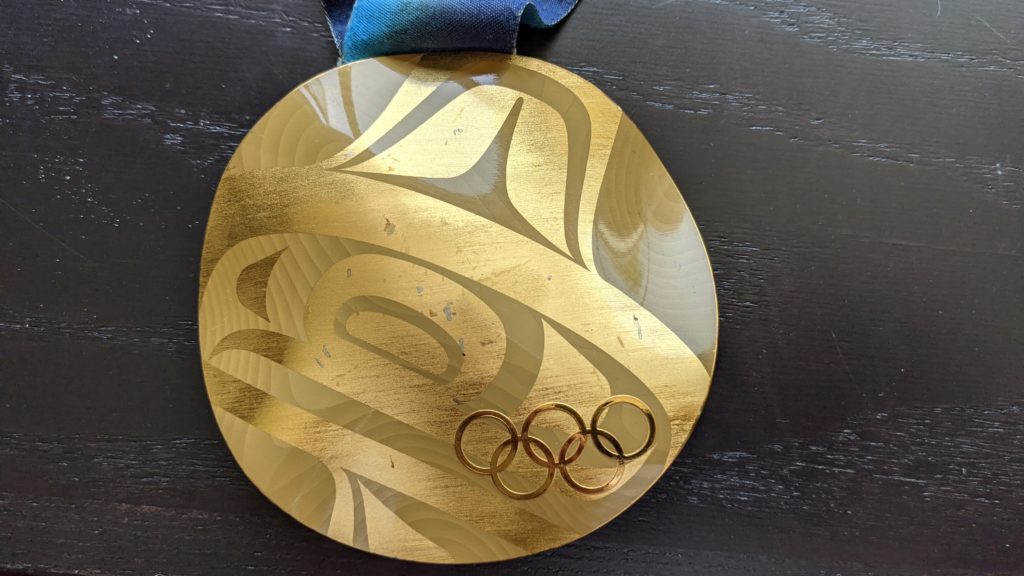Jul 6, 2021
Whenever doping stories go viral, I get flooded with interview requests, thanks to the high-profile doping stories I’ve written in the past, both at Sports Illustrated and ProPublica. So last week was a deluge. As track coach Steve Magness put it: “We found the issue that can unite America’s political division, that brings conservatives and liberals together on the same side… Sha’Carri missing the Olympics for testing positive for pot.”
Next to Jamaica’s Shelly-Ann Fraser-Pryce, who has the fastest 100-meter time in the world, Sha’Carri Richardson would have been the top contender for gold in Tokyo. Assuming you aren’t the protagonist of Plato’s cave, you’ve heard that Richardson has been disqualified from the individual 100-meters because she tested positive at the Olympic Trials for THC, the main psychoactive ingredient in marijuana. Richardson admitted that she smoked before Trials after learning of the death of her biological mother.
I don’t intend to add to the remarkable sum of hot takes about this on the internet. But the questions that some reporters asked me betrayed fundamental misconceptions that I think harm the public understanding of this news story. Based on the misunderstandings I’ve gleaned, below are a few points of context for anyone with a newfound interest in anti-doping policy.
Misconception 1: The law of the land matters when it comes to anti-doping.
It does not. Congresswoman Alexandria Ocasio-Cortez, among many others, pointed out that Richardson smoked in Oregon, where marijuana is legal. But anti-doping regulations run according to the World Anti-Doping Agency’s rules, (aka. “the Code”), and its master list of substances that are prohibited in Olympic sports. The Olympic committees of 206 countries are signatories to the Code. As you might imagine, Oregon, the Netherlands, and Saudi Arabia don’t have the same marijuana laws, so regional laws would not currently work as a way to standardize anti-doping. (And even if national law somehow were used, marijuana is still illegal according to U.S. federal law.)
Furthermore, a substance can actually be completely legal in the entire U.S. and still banned in sports. DHEA is a good example. It’s a testosterone precursor that avoided becoming a federally controlled substance, thanks in part to former Utah senator Orrin Hatch. (DHEA was big business in Utah, and Hatch’s son was a lobbyist for the dietary supplement industry.) You can get DHEA at your local CVS, but it is nonetheless banned in Olympic sports.
Misconception 2: The U.S. Anti-Doping Agency could overturn the suspension.
With Congressman Jamie Raskin, Ocasio-Cortez called on the U.S. Anti-Doping Agency to reverse the suspension that will cost Richardson a chance to run in the 100. USADA is the body that enforces WADA Code for American athletes in Olympic sports. USADA has no discretion to overturn the suspension in a case like this. To overturn the procedures that are formally agreed-upon by 206 Olympic committees (and a bunch of other entities involved in international sports) would be the sports equivalent of overturning an election result because one constituent party doesn’t like it. It would render the entire code obsolete. (If national bodies could summarily unban their own athletes, you would have seen a lot of Russian athletes getting unbanned in recent years.) Even USADA CEO Travis Tygart has made clear in his public statements that he’s not thrilled with this outcome. But it’s not up to him.
Misconception 3: Baseball and football players don’t get suspended for weed, so Sha’Carri shouldn’t either. There should be a single standard for all athletes.
Philosophically, I think this is a fine argument to make. In current reality, though, it isn’t useful. In 2014, I broke the news of the product that led U.S. sprinter Tyson Gay to get suspended. He was taking it in part because he’d been told by a healthcare provider that NFL players were also taking it, and they weren’t failing drug tests. The product listed DHEA, which would be no problem for an NFL player — it isn’t banned by the NFL — but a big problem for an Olympian. Again, DHEA is legal in the U.S., and not banned in the major U.S. pro sports. But it is prohibited by WADA, which is what matters for Olympic sports.
Beyond just the list of prohibited substances, there’s another reason that anti-doping differs between Olympic sports and the major U.S. leagues. Back at SI, every time I wrote about the NFL’s lax anti-doping, I (or my boss) would get a letter from the league about how it had the strongest anti-doping protocols in sports. Lol. (You can listen to retired star receiver Calvin Johnson make light of the NFL’s testing in this recent podcast.)
The fact is, testing in the major U.S. pro sports is limited for two main reasons: first, the leagues police themselves, and you can imagine how much they enjoy foisting scandals upon their own heads. Second, in the major pro sports, the athletes have unions that engage in collective bargaining. Anti-doping policies are arrived at through negotiation between the respective league and players’ union. The result has been anti-doping efforts that are far less stringent than in Olympic sports. (I must say, I was surprised when two Super Bowl MVPs in four years — Von Miller and Julian Edelman — managed to run afoul of NFL drug rules. But I’m not even sure most NFL fans realize that happened.)
I think there are pros and cons to both systems, but it is inarguable that collective bargaining leads to much easier testing protocols in the pro sports leagues. Baseball is an interesting example, where Major Leaguers have a union, but Minor Leaguers do not. Back when I was actively covering anti-doping, testing in the Minors was more stringent. In fact, the Minors served as the place where testing itself was sometimes tested before it went to the big leagues.
Misconception 4: Unless Sha’Carri was running for a bag of chips, weed wouldn’t have made her faster so it shouldn’t be banned.
Honestly, even if she were running for a bag of chips, it would probably just make her think she was faster. Seriously, though, I sympathize with this argument. Personally, I do not think WADA should be testing for marijuana, and — as a year-round track fan — I would be thrilled to see Sha’Carri run in Tokyo. That said, even if everyone agreed that marijuana only makes you slower, (and they might), it could still be banned.
First off, the WADA prohibited list is not sport-specific — with one exception that I know of. For the most part, a substance is either banned or not; it isn’t banned by sport. So let’s say a sedative is banned in archery or shooting, where athletes have used calming drugs to improve performance. Then it’s going to be banned in track, too, even if it wouldn’t help. The lone exception (that I know of) is for beta blockers, common prescription drugs that lower blood pressure and slow heart rate. Beta blockers are banned in archery and shooting, and a few other sports, presumably because of potential performance enhancement. (Shooters try to fire between heartbeats.)
Unlike, say, anabolic steroids, marijuana is only banned in competition, and a 2011 WADA paper gives the reasons why. In a nutshell, the paper claims that marijuana meets all three criteria of a prohibited substance — and it only needs to meet two to get on the list: 1) Health risk: impaired reaction time and decision making could endanger the athlete or other athletes. 2) Potential performance enhancement: the paper contends that studies and athlete interviews suggest it could help with some sports. (The paper mentions that marijuana dilates blood vessels and airways, which “could improve oxygenation.”) 3) Violates the spirit of sport: it’s illegal in most places, and hence doesn’t make for good role modeling for young people.
The third criterion is plainly subjective. (And given that THC is only banned in competition, that criterion may not be carrying much weight.) The evidence for the other two, in my opinion, is extremely thin. If I were emperor of WADA, the agency would simplify testing more generally and would not be testing for marijuana. (Believe me, if I were WADA emperor, I’d have changed lots of things over the years.) Like any international body, WADA tends to be a slow-moving ship. But, to its credit, it removed CBD from the prohibited list in 2019, so perhaps THC will be reconsidered in the future. The 2011 paper did note that the issue is controversial, and knowledge on it is evolving.
I was really looking forward to a showdown between Richardson and Fraser-Pryce. And I’m still holding out some consolation-prize hope. Richardson’s ban will cost her an entry in the individual 100-meters, since her win at Trials is cancelled. But she may still be selected for the 4×100-meter relay, so maybe we can still get a showdown in the relay.
(*Update*: Richardson was not selected to the relay team. U.S.A. Track and Field issued a statement saying that anti-doping policies around THC should be reevaluated, but that it would stick to its own policy of putting top finishers from the Olympic Trials on the relay team. Given that Richardson’s performance at the Trials was nullified, she isn’t in that group.)
Thanks for reading. Until next time….
David
p.s. If a friend sent you this newsletter, you can subscribe here. The Range Report will move to a new home soon, but will remain free, and your subscription will be automatically transferred.



